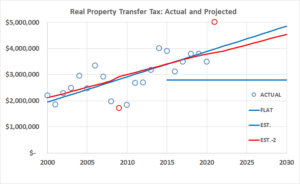“In the last housing cycle, Piedmont was asked to plan for 60 new homes and the city fell short, issuing permits for just 37 units*. This cycle, the city is expected to plan for nearly 600 new homes. …
In a staff report on future housing development, the Piedmont Planning Division highlighted several ideas from residents about how to build more affordable housing, including placing it on land annexed from Oakland and subsidizing development of new units and purchasing apartments for teachers and first responders in the neighboring city.” SF Chronicle May 20, 2021
The May 20, 2021 SF Chronicle article contained several errors. The 60 new housing units are the planning goal for the current cycle. Piedmont is on track to exceed its effort to add 60 units by the deadline at the end of 2022. The proposed 587 new housing units is the planning goal assigned for the cycle beginning in 2023 and ending 2031.
City staff reports “The 2020 annual progress report shows that the City of Piedmont is close to meeting and surpassing the annual rate of construction of new housing units anticipated by the RHNA [Regional Housing Needs Allocation] having issued building permits for the construction of approximately 73 new units out of a state-mandated allocation of 60 new units by the end of 2022.”
As a denser city, Piedmont will be seriously challenged in the future to plan for its uncontested 587 additional housing units RHNA. The State considers that local governments play a vital role in developing affordable housing. In 1969, the state mandated that all California cities, towns and counties must plan for the housing needs of our residents—regardless of income.
Other cities having greater land availability than Piedmont have contested their allocation for increased housing units. State laws allow for input on draft RHNA based on individual cities conditions.
The Piedmont City Council has consistently voiced their desire to meet Piedmont’s draft allocation (587) and add the new housing units within Piedmont.
The City Council has moved ahead on the 2023 planning process, hiring consultants, asking residents where they want to put 587 new units, and forming committees to pursue and influence Piedmonters in regard to the 587 new units. Public hearings in Piedmont have yet to be held on the Piedmont opinions of the new housing expansion.
Why is the Piedmont RHNA for the cycle beginning 2023 approximately 10 times larger than the current RHNA?
One contributing factor is the new “equity adjustment,” a formula was proposed that increases allocations of lower-income units for some jurisdictions identified as having racial and socioeconomic demographics that differ from the regional average. Five jurisdictions that met the formula were excluded. These jurisdictions were excluded from the equity adjustment to avoid directing additional lower-income RHNA units to jurisdictions with racial demographics that are different than the rest of the region but that already have a high share of lower-income households. [See tables beginning on page 31 of this report.]
Per the Piedmont City Charter, some of the potential methods of increasing Piedmont housing units will require voter approval to make zoning changes.




